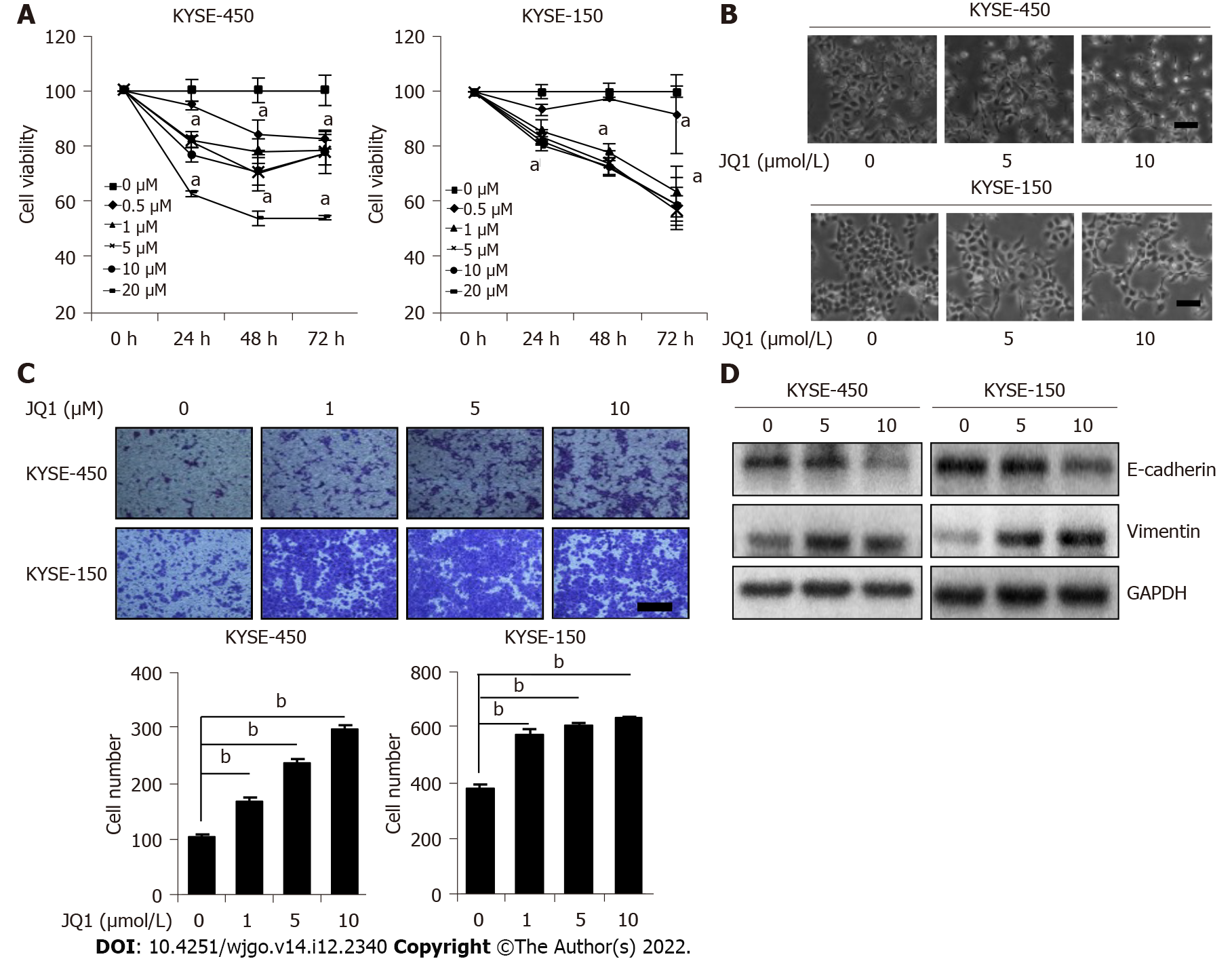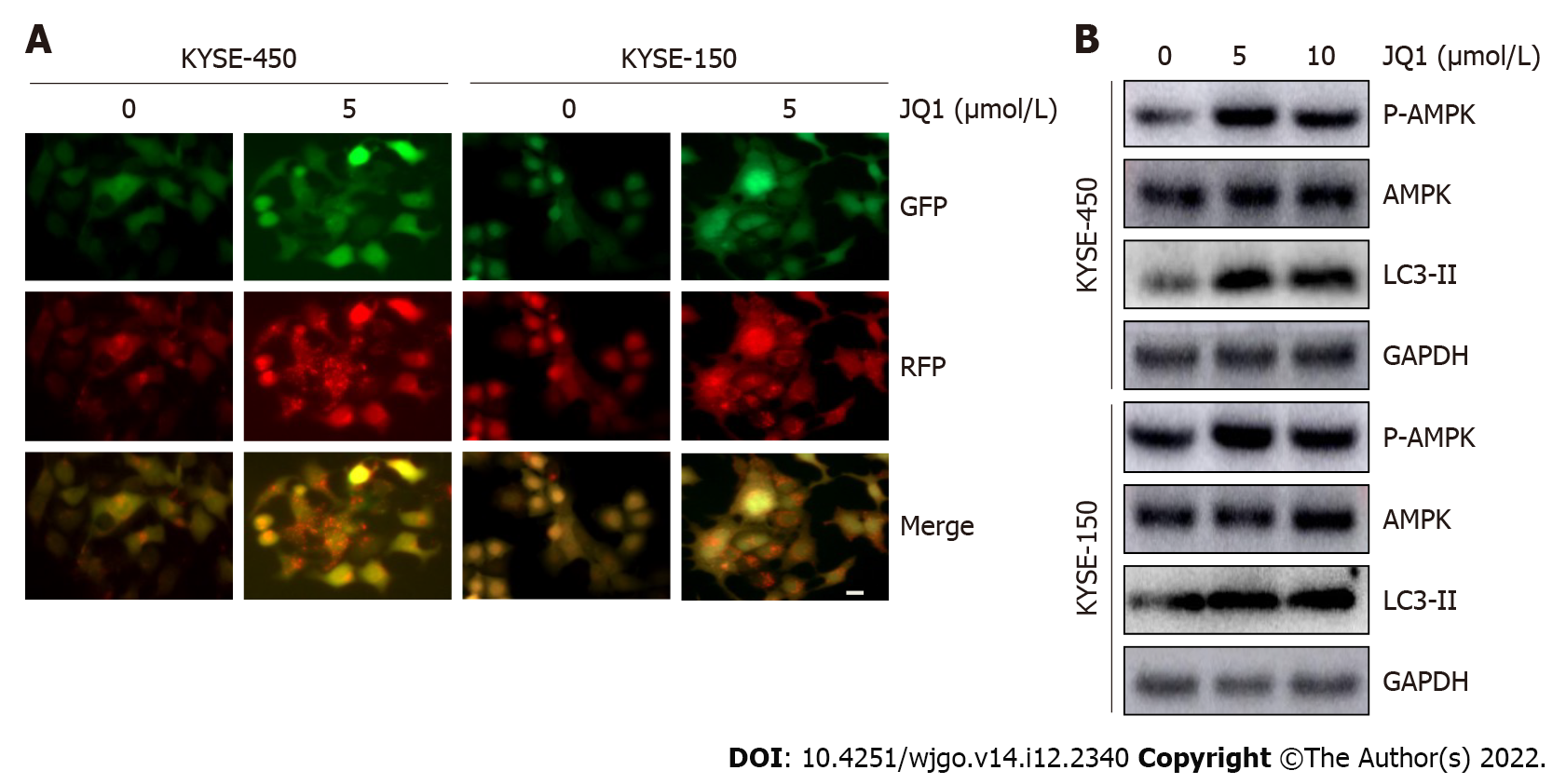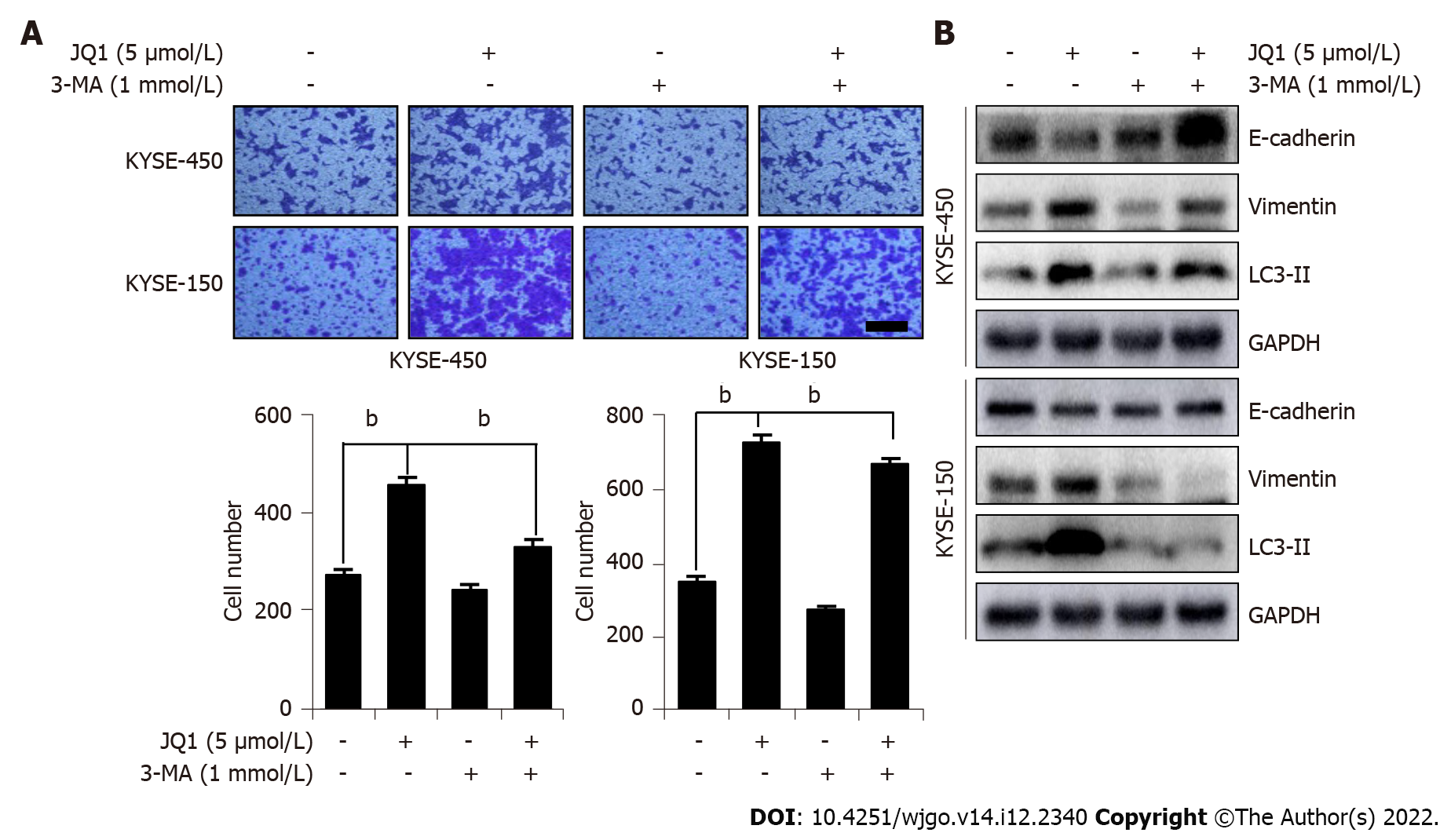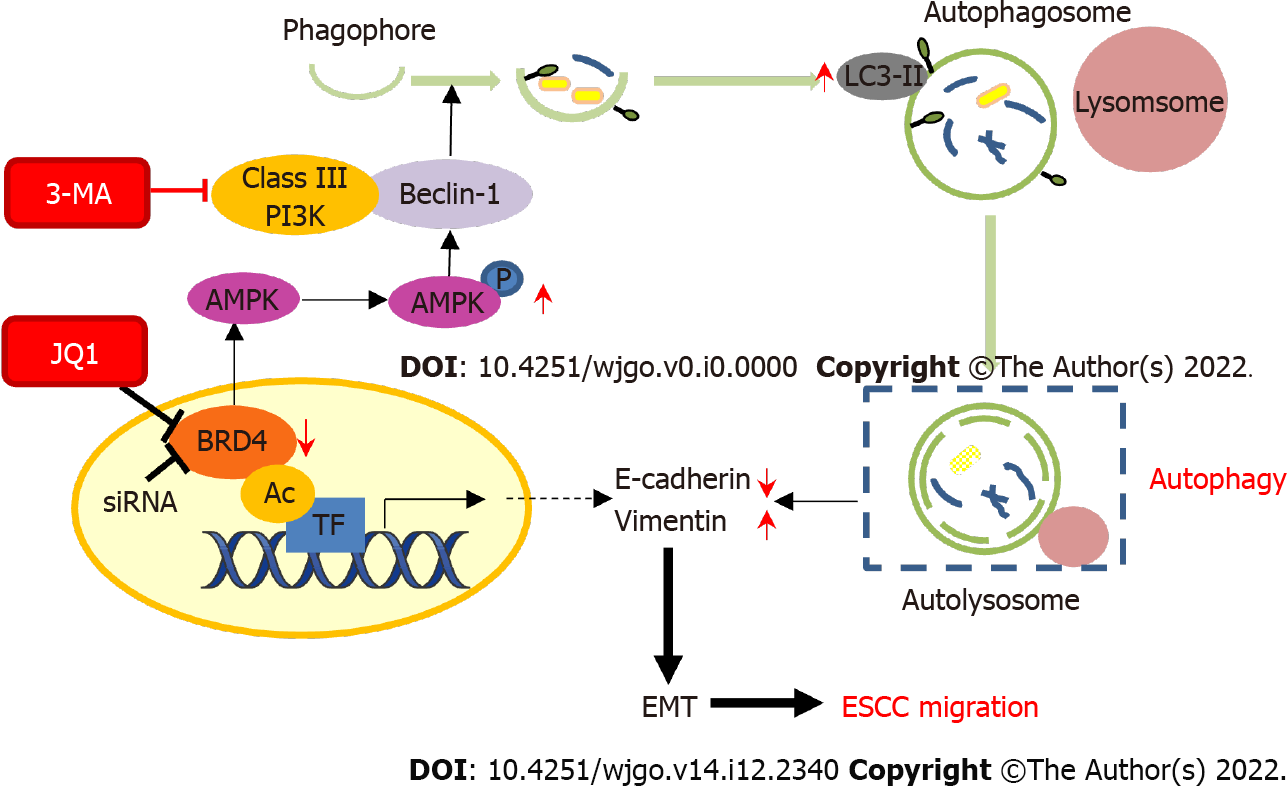Copyright
©The Author(s) 2022.
World J Gastrointest Oncol. Dec 15, 2022; 14(12): 2340-2352
Published online Dec 15, 2022. doi: 10.4251/wjgo.v14.i12.2340
Published online Dec 15, 2022. doi: 10.4251/wjgo.v14.i12.2340
Figure 1 Effects of JQ1, an inhibitor of bromodomain-containing protein 4, on esophageal squamous cell carcinoma cell proliferation and migration.
A: 3-(4,5-dimethylthiazol-2-yl)-2,5-diphenyl-terazolium bromide assay was conducted to detect cell viability of KYSE-450 cells and KYSE-150 cells after treatment with JQ1 at various fixed dosages at different time points; B: Phase contrast images of esophageal squamous cell carcinoma cells treated with JQ1 were captured by a Nikon digital microscope. C: Transwell assay was performed to examine cell migration in KYSE-450 cells and KYSE-150 cells after treatment with JQ1 at various fixed dosages; D: Western blot was carried out to measure the expression levels of E-cadherin and vimentin in KYSE-450 cells and KYSE-150 cells after treatment with JQ1 at various fixed dosages. GAPDH was used as the protein loading control. aP < 0.05, bP < 0.01. Scale bars in (B) and (C) are 100 μm.
Figure 2 Knockdown of bromodomain-containing protein 4 promotes esophageal squamous cell carcinoma cell migration.
A: Transwell assay was performed to detect cell migration in KYSE-450 and KYSE-150 after transfection with siBRD4; B: Western blot was conducted to measure the levels of E-cadherin and vimentin after transfection with siBRD4. GAPDH was used as the protein loading control. aP < 0.05, bP < 0.01. Scale bar in (A) is 100 μm.
Figure 3 JQ1 induces cell autophagy and activates AMP-activated protein kinase.
A: Cells infected by the GFP-RFP-LC3 virus were treated with dimethyl sulfoxide or JQ1 dissolved in dimethyl sulfoxide (5 μmol/L) for 24 h, then fluorescence microscopy images were photographed. Bar = 20 μm; B: Cells were either untreated or treated with JQ1 at doses of 0, 5, or 10 μmol/L for 24 h. Western blots were performed to examine the levels of LC3-II, AMP-activated protein kinase (AMPK) and p-AMPK in KYSE-450 cells and KYSE-150 cells. GAPDH was used as the protein loading control.
Figure 4 Inhibition of autophagy blocks JQ1-caused cell migration and epithelial-mesenchymal transition.
A: Transwell assay was performed to detect cell migration of KYSE-450 and KYSE-150 after treatment with JQ1 (5 μmol/L) along or combination with 3-methyladenine (3-MA) (1 mmol/L); B: Western blots were performed to measure the levels of LC3-II, E-cadherin, and vimentin in KYSE-450 cells and KYSE-150 cells after treatment of JQ1 along or combination with 3-MA. GAPDH was used as the protein loading control. bP < 0.01. Scale bar in (A) is 100 μm.
Figure 5 Schematic model of the effect of JQ1 or inhibition of bromodomain-containing protein 4 on cell migration in esophageal squamous cell carcinoma cells.
JQ1 treatment or siRNA inhibition of bromodomain-containing protein 4 can lead to increased phosphorylation of AMP-activated protein kinase, resulting in upregulation of LC3-II protein level in order to activate autophagy. In addition, the activation of autophagy promotes the epithelial-mesenchymal transition process of esophageal squamous cell carcinoma cells, thus promoting the JQ1-induced migration of esophageal cancer cells. Finally, this pro-migration effect can be inhibited by the autophagy inhibitor 3-methyladenine. AMPK: AMP-activated protein kinase; TF: Transcription factor; BRD4: Bromodomain-containing protein 4; EMT: Epithelial-mesenchymal transition; ESCC: Esophageal squamous cell carcinoma; AC: Acetylation.
- Citation: Yang WQ, Liang R, Gao MQ, Liu YZ, Qi B, Zhao BS. Inhibition of bromodomain-containing protein 4 enhances the migration of esophageal squamous cell carcinoma cells by inducing cell autophagy. World J Gastrointest Oncol 2022; 14(12): 2340-2352
- URL: https://www.wjgnet.com/1948-5204/full/v14/i12/2340.htm
- DOI: https://dx.doi.org/10.4251/wjgo.v14.i12.2340













